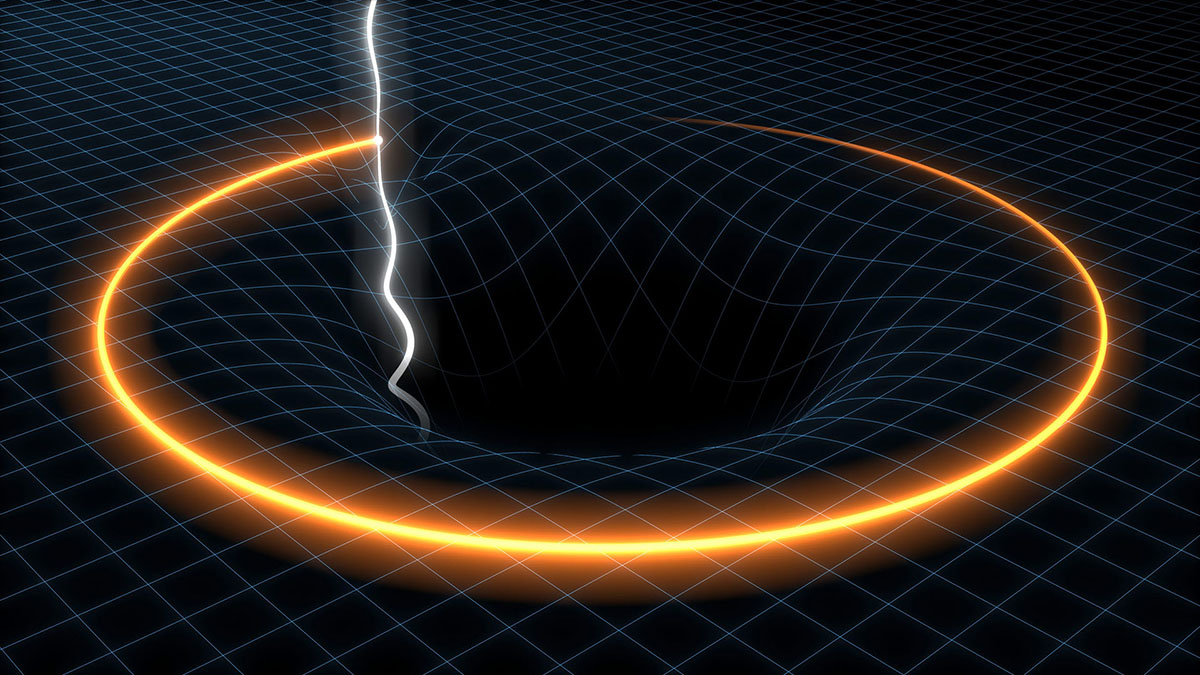replicating hawking radiation in the lab

Many a physicist wonder if black holes, the gravitational ghosts of massive stars that distort the fabric of space and time to the breaking point with their tidal forces, may have a soft underbelly. Rather than being eternal, these bizarre cosmic objects could be radiating away heat and energy until they violently evaporate eons after they were born. Well, that’s what Stephen Hawking’s work seems to suggest and what astronomers want to prove.
To help track down the elusive phenomenon known as Hawking radiation, a duo of researchers at Dartmouth came up with an experiment what should simulate the behavior of a black hole’s active event horizon by firing a microwave beam through an array of highly sensitive magnetometers known as SQUIDs, or superconducting quantum interference devices. Or rather, give us an idea of how Hawking radiation may behave on the quantum level without having to actually travel to a black hole and measure whether it gives off a tiny bit of energy.
Unlike quite a few media mentions of the paper loudly proclaim in their headlines, this experiment wouldn’t be a method of simulating a black hole in the lab. Even if we could build an enormous particle collider capable of creating black holes, we would only have billionths of a second to study it until the object will either evaporate away or leave its containment chamber. In reality, this setup would only replicate quantum fluctuations many theorists expect to find at the event horizon. However, practical applications of this effort would be pretty limited considering how small and far away the objects we’re trying to study really are.
Let’s step back for a second and review the concept of Hawking radiation. As energy and gravity waves sweep through the fabric of space and time, they periodically summon infinitesimal particle/anti-particle pairs which usually annihilate each other very quickly. Just like matter/antimatter pairs, the only real difference between a quantum particle and its counterpart is the charge; one is negative, the other is positive. When they appear in the range of a black hole’s event horizon, the tidal forces prevent the pair from doing what they normally do. As negatively charged particles fall into the black hole’s hungry maw, the positive ones have enough energy to get away, taking some of the gravitational monster’s with it. Over the eons, as the black hole is eroded by the flow of positively charges particles, it decays exponentially until it can no longer hold itself together and explodes.
However, everything we’ve just covered exists only in formulas and astronomers have yet to detect a black hole going poof. And they may have to wait a long time for a confirmed signal to hit their instruments. According to the math, black holes would take trillions and trillions of years to degrade and the idea of detecting the dying gasp of a highly degraded one rests on the theory that there might be primordial black holes with roughly the mass of our planet. If they formed soon after the Big Bang and have been floating around all this time without gaining much mass or being swallowed up by their bigger cousins, they should be dying just about now. But noticing the energy coming off from an explosion of an object the size of a marble from many light years away while an entire sky of exponentially more powerful signals is turbulently buzzing along, is a challenge not to be taken lightly. They might be looking for a very long time to come…





